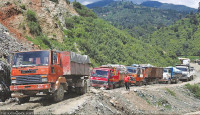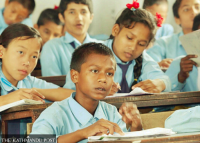Opinion
Tourism is changing
Tourism has been characterised as a system rather than as an industry because it consists of several interrelated parts working together to achieve a common purpose.
Tourism has been characterised as a system rather than as an industry because it consists of several interrelated parts working together to achieve a common purpose. The tourism system is like a spider web—touch one part and reverberations are felt throughout the system. The possible future shape, channels of distribution and ways of promoting or marketing tourism globally is an interesting subject in light of its fragility and vulnerability. What will tourism be like in the 21st century? One thing is certain: It will be very different. Tourism currently is greater in size and scope than it has ever been in history. The winds of change are blowing strong and the shape of tourism will be much more different in the future. Volatile politics and emergence of capricious politicians in the rich countries and newly launched federalism in Nepal pose great challenges when devising policies and programmes of ‘co-opetition’ (collaboration among competitors).
Market metamorphosis
National and provincial tourism branding will be another gigantic task when the Nepal Tourism Board devolves authority and responsibility to the states in the post-election realm. The variables in the future of tourism are shifts in economic power among people in different continents, globalisation of tourism, deregulation and removal of barriers like immigration laws and currency rules, increasing sophistication and expectation of travellers, creation of new tourism partnerships, commission ‘capping’ and new technologies. There is a cornucopia of travel market segments and travel offerings as the market has continued to fragment due to heavy intervention by the World Wide Web. New technology, more experienced customers, global economic restructuring and environmental limits to growth are only some of the challenges facing the industry. Hence, it is in the process of metamorphosis—undergoing rapid and radical change.
Challenges in tourism marketing are unique and different from those of traditional product marketing. Tourism is a combination of personal services and certain physical facilities and products. An intangible experience is offered, not a physical good that can be inspected before it is bought. Because tourism is a service business, production and consumption take place at the same time. Tourism supply cannot be stored. Unlike a can of food which, if not sold one day, can be sold the next, unsold airline seats, hotel rooms, places or escorted tours and restaurant seats are lost forever. While the tourism inventory cannot be stored and adjusted to changes in demand, the capacity to produce tourism services must be developed ahead of time. This puts great pressure on tourism developers to effectively plan the proper amount of facilities and keep them as fully used as possible.
A people business
The first step in comprehending tourism is understanding its underlying foundation of human involvement. Tourism is a people business—people providing personal services to other people. Since there is a great amount of variation in human personalities, it is very difficult to always provide a consistent quality of service. Hence, it is impossible to fully standardise tourism services. In Nepal, the process of standardisation has been undermined and service quality has dropped. The exodus of skilled manpower to the Gulf and other lucrative labour markets has created a deep dearth of human resources in the trade and turned our tourism education institutions into places to teach theory.
The other factor that makes tourism different from other industries is the role of travel trade intermediaries (travel agents) and demand. Because visitor services are located at a distance from potential customers, specialised intermediaries—organisations that operate between the producer and the visitor—are required to bridge the gap. Additionally, since many tourism organisations are small in size, they cannot afford to set up their own retail outlet in every visitor’s hometown. There is no physical distribution process in tourism, which makes services unparalleled, dissimilar and more complex.
Boosting demand
Tourism demand is highly elastic and seasonal, and is influenced by subjective factors like taste and fashion and more objective factors like price and physical attraction of the destination. Almost one-third of the arrivals to Nepal are repeat visitors, and if new attractions are not developed to drive demand in the future, Nepal as a destination might lose its charm. New activities and attractions should be inserted in the packages and programmes offered to tourists. Hackneyed slogans and programmes will not attract new visitors. The Nepal Tourism Board’s major thrusts should be concentrated on comprehending these sensitive dynamics or else Nepal will miss the bus.
Finally, the intangible nature of tourism services means that a visitor’s travel experiences exist only in memory after the trip is over. Many products have guarantees and warranties, tourism services do not. While vacation photographs, videos and souvenirs help visitors remember their trips, a re-purchase is necessary to enjoy a similar trip experience again. Nepal should consider this as a major tool to entice repeat visitors and enhance their numbers.
Baral is associated with the tourism industry




 25.12°C Kathmandu
25.12°C Kathmandu









